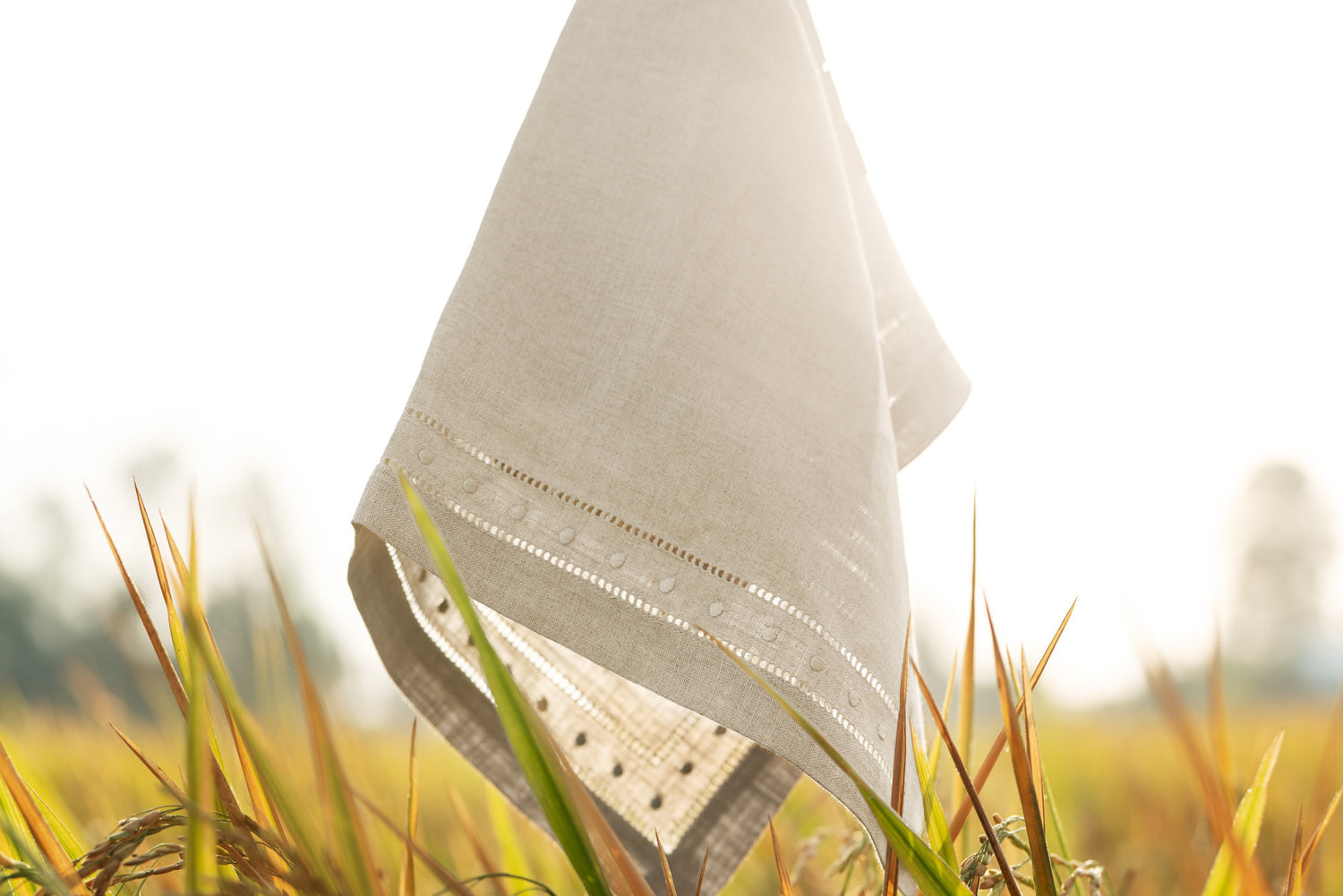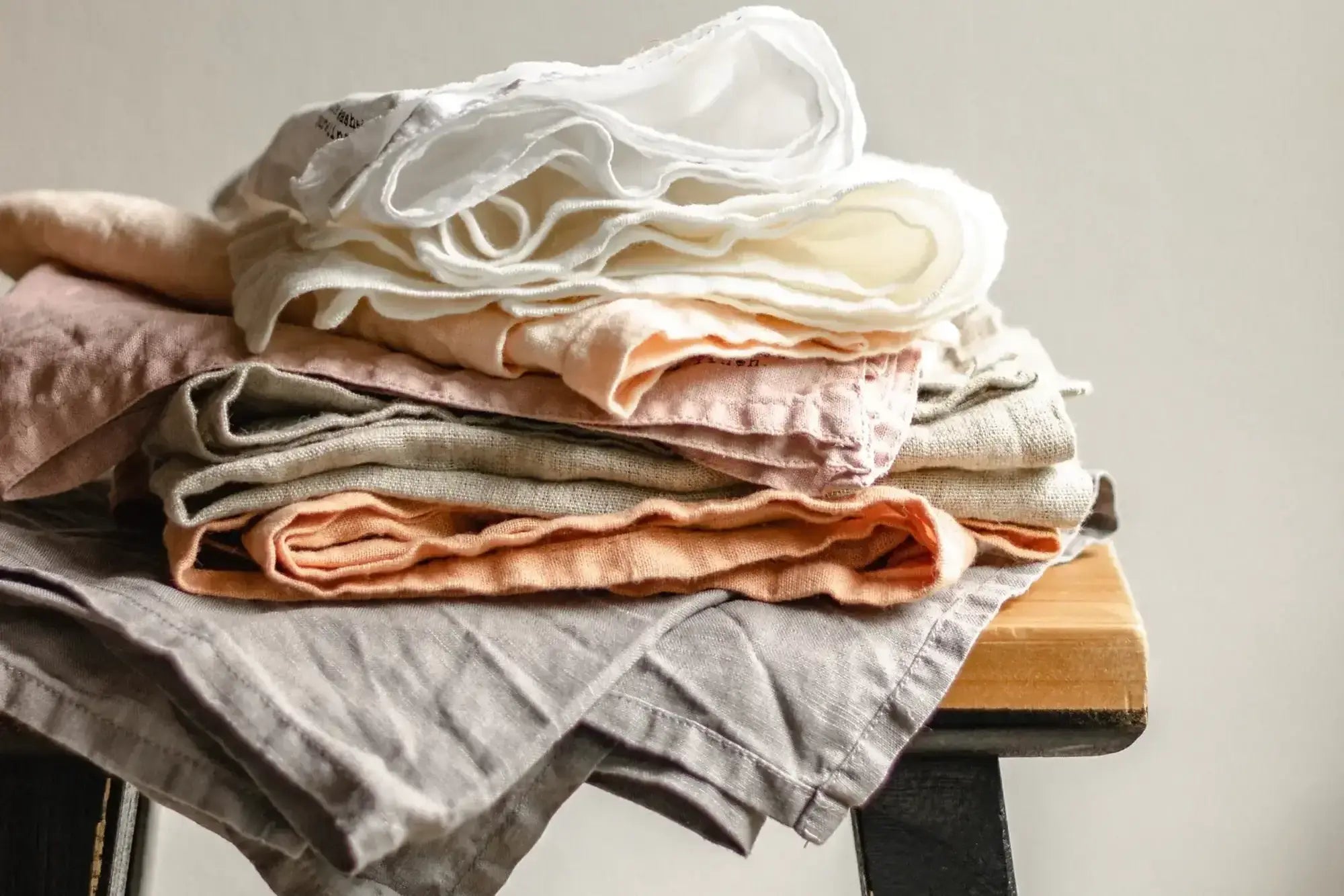Since humans first learned how to craft linen fabric from humble flax plants in Northern Europe tens of thousands of years ago, the world has witnessed a startling evolution in materials and technologies. It may be tempting to assume newer innovations like synthetic fabrics such as polyester have improved upon linen. Or perhaps new production methods for similar ancient materials such as cotton or silk may have rendered them overall superior?
But the truth is that despite centuries of experimentation, people have not discovered suitable replacements for many of the uses of linen. Its comfort, style, durability, and ease with which it can be sustainably grown ensure that linen remains one of the world’s most cherished fabrics.
Comfort
Linen can be made by carefully hand-weaving flax fibers into complex patterns. With use over time, the stiff, thick fibers become softer without losing their elegant appearance. And because the threads are little changed from when they were part of healthy plants that drew in water and air, they remain exceedingly breathable.
Beyond simply feeling good to the touch, linen boasts advantages for one’s health. People with sensitive or oily skin prefer linen as it is naturally hypoallergenic and anti-static. And because it can be washed simply and without harsh chemicals, it remains breathable and safe for the duration of its long life.

Style
You know linen when you see it. Because flax fibers do not have a natural elasticity, when woven and used, small wrinkles and creases form. The long threads have microscopic breaks which add subtle character that evokes the imperfect nature of growing plants. These small flaws remind people that the fabric came relatively unchanged from the earth, unlike heavily-engineered synthetic fabrics.
Linen’s versatile nature makes it amenable to a variety of uses, colors, and designs. From clothing to bedding to tableware, generations of people have adopted the fabric to their needs as well as the styles of the time.

Durability
One of the most quantifiable advantages of linen compared to similar fabrics is its longevity. The longer, thicker flax fibers are 30% stronger than cotton which significantly extends the material’s lifespan. Linen’s natural durability not only makes it suitable for a variety of uses but makes it convenient to transport, store, and package.
Because linen lasts so long, it naturally lends itself to timeless designs. Meanwhile, fabrics that quickly deteriorate are more often used in fast fashion products that do not foster responsible relationships with the planet or peaceful lifestyles. Linen’s association with enduring styles and slow living further enhances its appeal.

Sustainability
Linen is one of the most sustainable fabrics in the world for numerous reasons. Flax plants require far less water to grow compared to cotton plants and because they do not require fertilizers or chemicals, they have minimal negative impacts on the environment. The differences are even more profound when judged against synthetic materials that involve the use of harmful chemicals and extensive energy-demanding manufacturing.
Linen’s durability and embrace of timeless fashions mean a single linen napkin can be used for decades. Alternatives with shorter lifespans too quickly end up in landfills where they struggle to decompose. Conversely, linen is 100% biodegradable, so even if it is discarded, it will quickly return to the earth and not cause lasting impacts.




Leave a comment
This site is protected by hCaptcha and the hCaptcha Privacy Policy and Terms of Service apply.